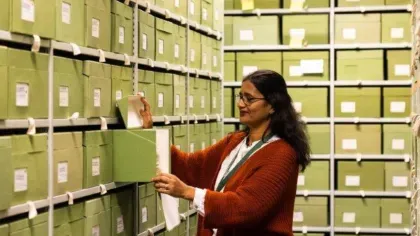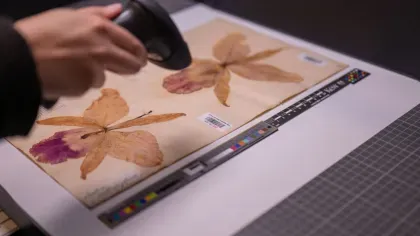28 May 2025
5 min read
New portal makes millions of specimens freely accessible to the world
Kew’s vast botanical and mycological archive - plant and fungal specimens collected over centuries - is now just a click away, thanks to our brand-new online Data Portal.

For centuries, Kew has been a sanctuary of biodiversity, a hub of botanical research, and a guardian of our planet's natural heritage – yet our herbarium and fungarium collections have not been easily accessible to the rest of the world, stunting progress in many fields of scientific research.
That is, until now.
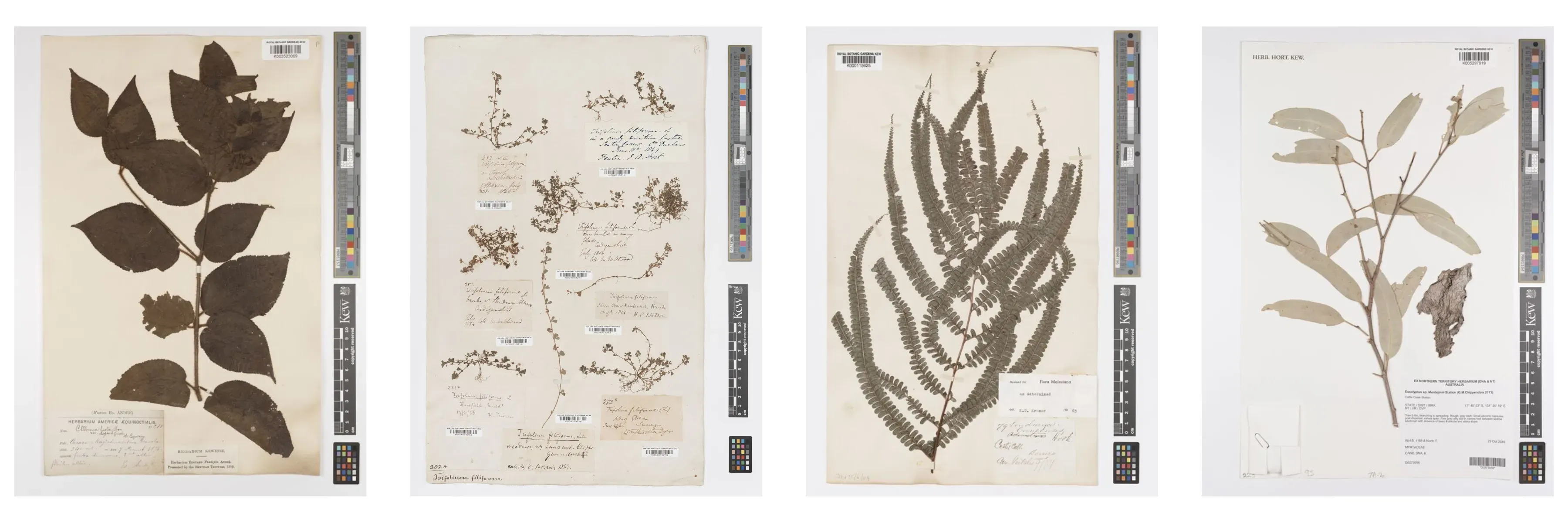
Today, we are excited to announce the official launch of our new, highly anticipated online Data Portal: a digital treasure trove that will house all 7.5 million of our prestigious herbarium and fungarium specimens, some dating back over 300 years.
To put this into perspective, if you were to line up all these specimens end-to-end, they would stretch from Edinburgh to Cairo – almost an entire continent!
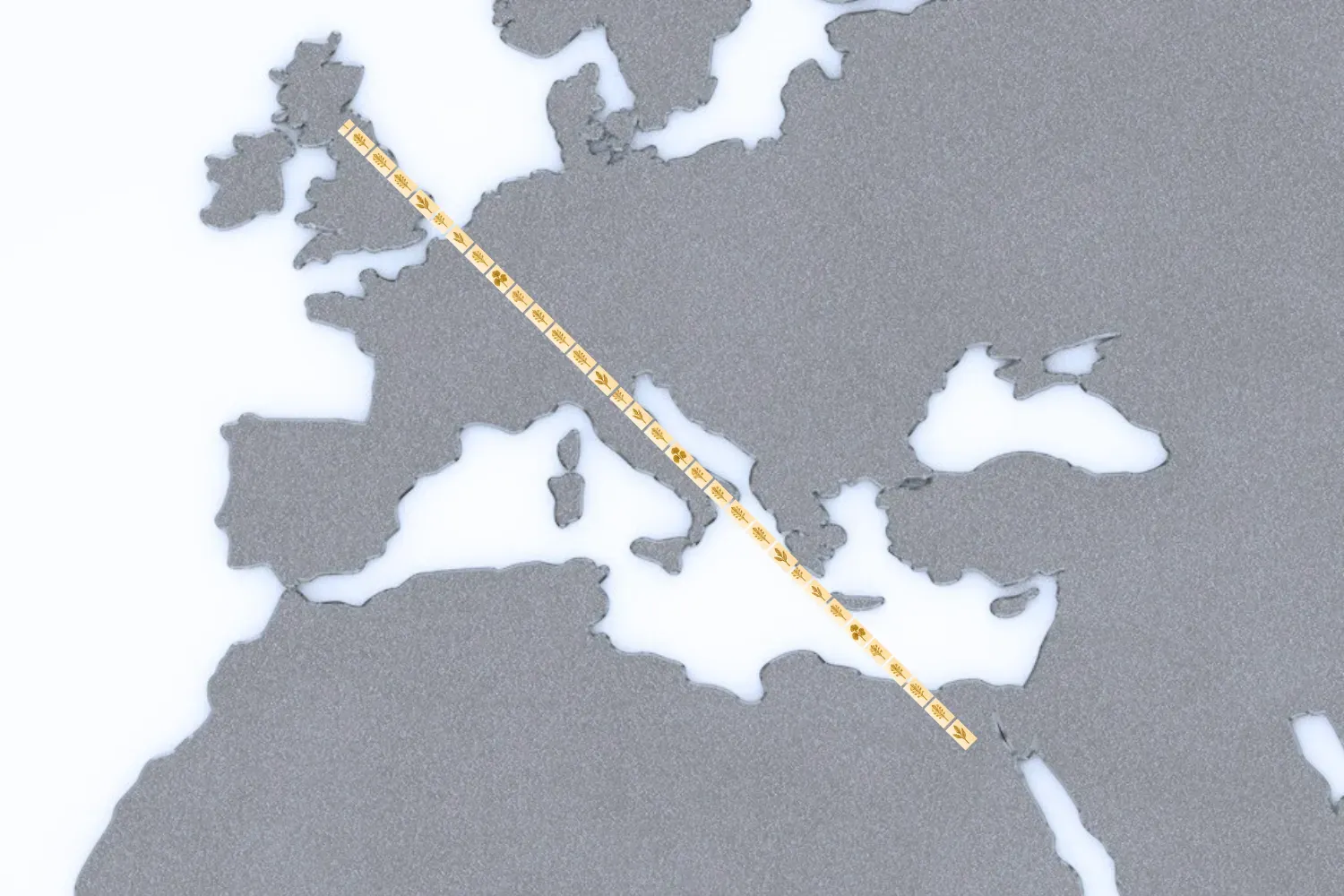
This is a groundbreaking milestone, one that will unlock many of nature’s secrets with the acceleration of research into our biggest global challenges, including biodiversity loss and climate change.
Our Head of Collections, Alan Paton, commented:
“One of the reasons why I am so excited about the release of our Data Portal is that once our entire Herbarium and Fungarium collections are available, we will see how a global community will use this data to combat our greatest global challenges. The Portal will also allow us to show data from our other collections in due course.
“It’s yet to be seen how combining this treasure trove of data with advanced technologies such as artificial intelligence will accelerate this research, but that’s another reason to be excited, and why today’s launch will be valuable for generations to come.”
Unlocking Nature's Secrets: What does it mean for you?
The unveiling of our online data portal represents a leap forward in the realm of botanical research, conservation, and education, providing global access to an extensive collection of plant and fungal specimens, a vast and valuable resource for scientists, researchers, educators, and nature enthusiasts worldwide.
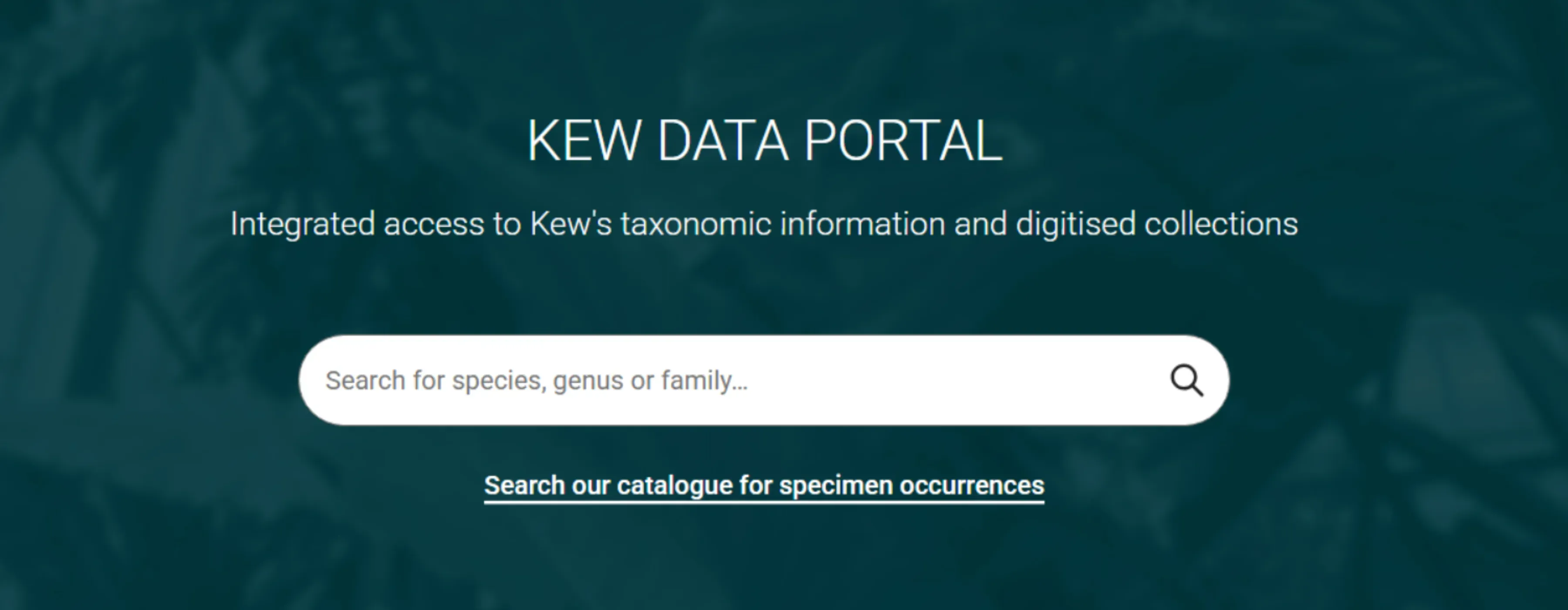
Our herbarium specimens and fungarium specimens, often meticulously prepared to highlight features of botanical or mycological interest, have been essential tools for botanists, mycologists, and other scientists for centuries. Collectively, they capture the breadth of Earth's biodiversity and serve as time capsules, providing a snapshot into the local climate and ecology at the time they were collected.
How herbarium specimens can help combat climate change
By comparing where plants once grew and what characteristics they had with their distribution and characteristics today, scientists can trace the fingerprints of climate change across time and space. This historical record helps predict future shifts, guide conservation efforts and even inform crop development for a warming world. In short, these specimens are helping us plan for a climate-resilient future – one dried plant at a time.
However, access to the majority of our collection has, until now, previously been largely restricted to physical confines.
.jpg75d1.webp?itok=-vR8BgvZ)
A Digital Revolution
Through meticulous imaging, databasing and other work, our Digitisation Project has created an unprecedented level of access to our specimens. With the launch of our online Data Portal, anyone with an internet connection can embark on a journey to explore the depths of botanical and mycological knowledge, all from the comfort of their own device.
Previously, to have seen one of these specimens, someone overseas would have needed to jump on a plane and travel to Kew: an expensive and time-consuming journey, especially for researchers working in the biodiverse tropical countries whose flora and funga are best represented in Kew’s collections.
One of our Deputy Directors and the project’s Senior Research Officer, Paul Kersey, added:
“Ultimately, this project underscores our commitment to preserving and sharing the wealth of knowledge contained within our global collections with a global audience. It is a pivotal moment in our mission to support global biodiversity and environmental sustainability."
Key Features of the Online Data Portal:
- Global Access: Our portal is open to the world, breaking down geographical barriers.
- User-Friendly Interface: We have designed the portal with accessibility in mind, ensuring that it’s simple to navigate and easy to use.
- Comprehensive Search: A powerful search feature enables users to search for specific species, regions, or collectors, ensuring efficient access to the desired information.
- High-Quality Imagery: Our portal boasts high-quality images of specimens, allowing for detailed examinations for research.
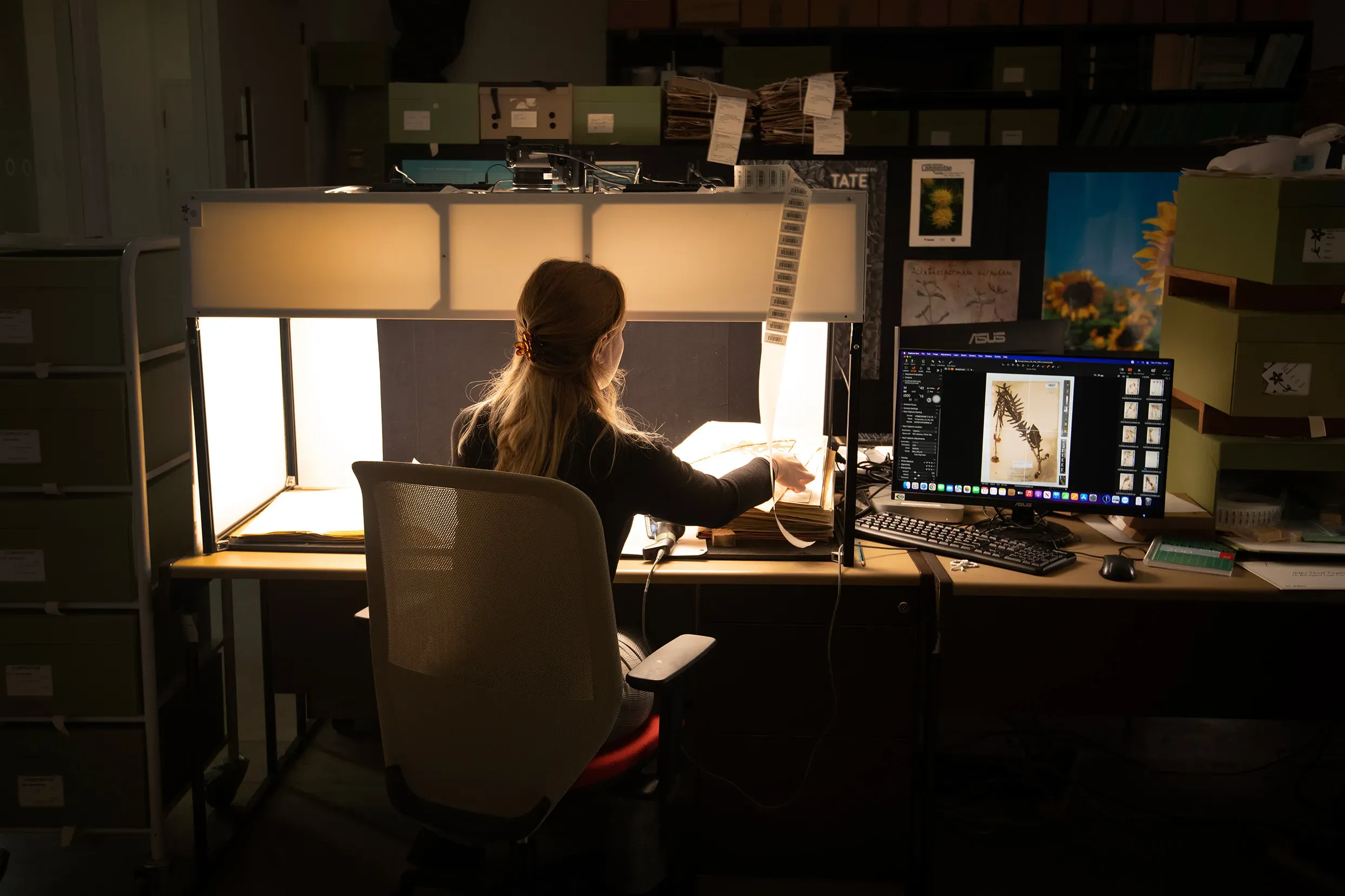
Impact and future prospects
With easy access to a wealth of botanical and mycological data, scientists will be better equipped to study and protect Earth's plant and fungal diversity. Conservation efforts will be more informed, and new discoveries possible.
Moreover, this initiative promises to inspire a new generation of botanists, mycologists, and nature enthusiasts. Our portal's use as an educational resource will help bridge the gap between scientific research and public engagement, nurturing a deeper appreciation for the wonders of the natural world.
%20(1).jpg0240.webp?itok=9ArCXvAA)
Part of Kew’s most ambitious project
Our new Data Portal has been developed as part of our ambitious Digitisation Project to share our entire herbarium and fungarium collection and make it accessible to scientists around the world who use them to underpin vital research.
Whether you're a scientist, a student, or simply a curious soul, check out our new Data Portal and browse through some of the five million specimens that have been digitised to date. The secrets of the natural world await.
Acknowledgments
The digitisation of our collections and the online portal have been part-funded by Defra, appeal supporters, private philanthropists, Fujifilm Electronic Imaging Europe GmbH, The HDH Wills 1965 Charitable Trust, and the first Chairman of Kew’s Board of Trustees, Lord John Eccles.
We’d also like to thank Atlas of Living Australia for developing the open-source software that hosts our Data Portal and the data of other biodiversity information and research institutions.
